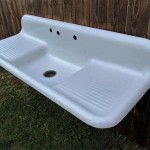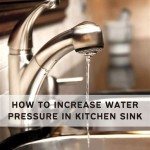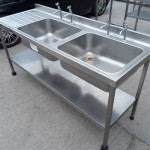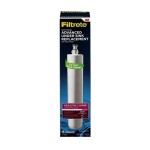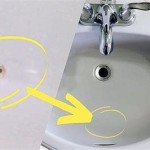How To Make a Sink Drain Faster
A slow-draining sink is a common household plumbing issue. While a plumber can resolve complicated problems, many simple solutions can improve drainage speed without professional assistance. This article outlines several methods for diagnosing and resolving slow drainage issues.
Initial Assessment and Simple Solutions
Before attempting more involved solutions, it's advisable to try a few basic remedies. Often, a slow drain is caused by a build-up of hair and soap scum. Removing the stopper and clearing any visible debris can significantly improve drainage. A bent wire or specialized drain cleaning tool can be used to pull out clogs from the drain opening.
Pouring a kettle of boiling water down the drain can also help dissolve fatty deposits that contribute to slow drainage. This is a particularly effective method for kitchen sinks prone to grease buildup. Following this with a cup of baking soda and then a cup of vinegar creates a fizzing action that can further dislodge debris. Allow the mixture to sit for 30 minutes before flushing with hot water.
Using a Plunger
If the simple solutions are ineffective, a plunger can be a useful tool. A cup plunger, specifically designed for flat surfaces like sinks, creates a vacuum seal to force the blockage down the drain. Ensure there's enough water in the sink to cover the cup of the plunger. Seal any overflow drain openings with a wet rag to prevent air from escaping. Apply firm and consistent pressure up and down on the plunger for several minutes. Remove the plunger and check if the water drains freely. Repeat the process if necessary.
Investigating the P-Trap
The P-trap is a U-shaped pipe located under the sink. Its purpose is to trap debris and prevent sewer gases from entering the home. It is also a common location for clogs. Place a bucket under the P-trap to catch any water. Loosen the slip nuts connecting the P-trap to the drain pipes. Carefully remove the P-trap and clean out any obstructions. Check the trap arm, the horizontal pipe extending from the P-trap to the wall, for blockages as well. Once clear, reassemble the P-trap, ensuring the slip nuts are tightened securely to prevent leaks.
Employing a Drain Snake (Auger)
A drain snake, also known as a plumbing snake or auger, is a flexible tool designed to reach deeper into drain pipes and break up or retrieve clogs. Insert the snake into the drain opening and rotate the handle as you feed it down the pipe. If resistance is encountered, continue rotating to break through the blockage. Once the snake has been extended as far as possible, slowly retract it while continuing to rotate. Clean the snake thoroughly as it is withdrawn. Flush the drain with hot water to ensure the clog has been cleared.
Chemical Drain Cleaners
Chemical drain cleaners are a readily available option, but they should be used with caution. These products contain harsh chemicals that can damage pipes if used improperly or too frequently. Always follow the manufacturer's instructions carefully. Wear protective gloves and eye protection when handling these chemicals. Be aware that some chemical cleaners are not compatible with certain pipe materials, so check the product label and your plumbing system's specifications before use.
Preventing Future Clogs
Preventing clogs is often easier than clearing them. Install a strainer over the drain opening to catch hair, soap scum, and other debris. Avoid pouring grease or oil down the drain. Flush the drain regularly with hot water to help prevent the buildup of fatty deposits. Periodically clean the drain with baking soda and vinegar as described earlier. These preventative measures can significantly reduce the frequency of slow drains and keep the plumbing system functioning efficiently.
When to Call a Plumber
While many drain clogs can be resolved with the methods described above, some situations require professional assistance. If the problem persists after attempting multiple solutions, or if the slow drain affects multiple fixtures, it's best to contact a qualified plumber. They have the expertise and specialized tools to diagnose and resolve more complex plumbing issues, such as blocked sewer lines or damaged pipes.
Choosing the Right Tools
Investing in a few basic plumbing tools can be beneficial for addressing minor drain issues. A quality cup plunger, a drain snake, and a set of adjustable wrenches are valuable additions to any homeowner's toolkit. These tools can help address common plumbing problems quickly and efficiently, saving time and money in the long run.

Unclog A Sink Drain Kitchen Or Bathroom Fast Easy Andrea Jean Cleaning

How To Unclog A Sink Herrmann Services

How To Unclog A Slow Running Bathroom Sink Drain 10 Options

With Just Three Common Household S You Can Make Your Sink Drain Faster Telegraph

How To Unclog A Slow Running Bathroom Sink Drain 10 Options

How To Make Your Kitchen Sink Drain Faster The Basic Art Of Italian Cooking

How To Unclog A Sink The Right Way

How To Unclog A Sink The Experts Simple Steps Drain

How To Unclog A Bathroom Sink Hana S Happy Home

How To Unclog A Slow Running Bathroom Sink Drain 10 Options
